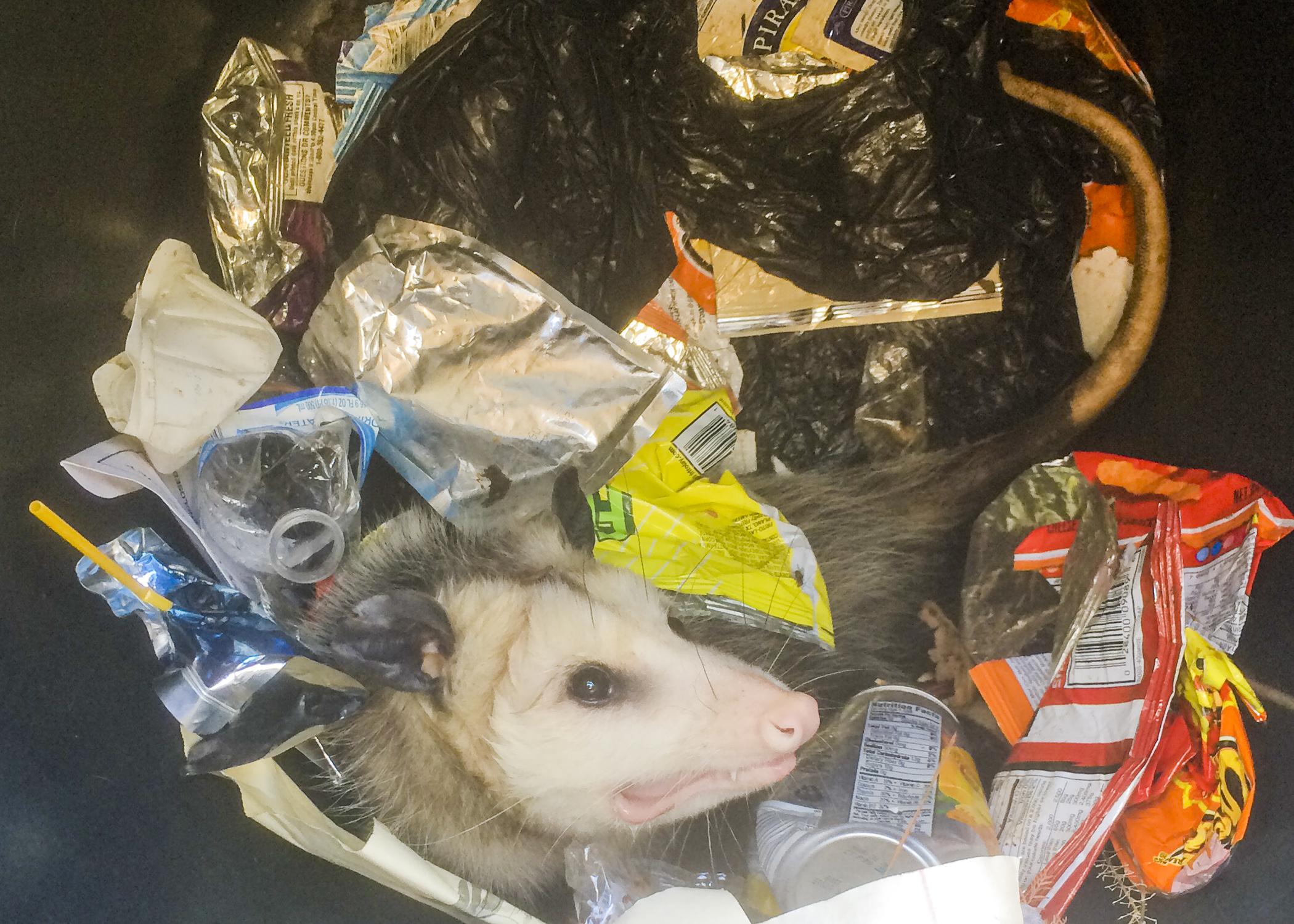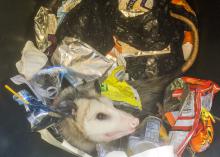Information Possibly Outdated
The information presented on this page was originally released on October 23, 2015. It may not be outdated, but please search our site for more current information. If you plan to quote or reference this information in a publication, please check with the Extension specialist or author before proceeding.
Oh! Possums! Get a pouch full of facts
STARKVILLE, Miss. -- Often found scavenging in trash cans or seen lying dead on roadsides after car collisions, opossums are not the most revered or understood wildlife creatures in Mississippi.
Yet North America’s only native marsupial (often called a “possum”) is really quite a unique animal. The female opossum carries its young in an abdominal pouch for several weeks during the gestation process. About the size of a house cat, the opossum has coarse grayish-white fur, a pointed face and a hairless, prehensile tail that allows it to hold and manipulate objects. Opossums are able to carry nesting material and other objects in their small, hand-like front paws and are well adapted for climbing.
Opossums are nocturnal animals, so they are typically active at night. Many homeowners never see these creatures traveling through yards and neighborhoods, but they may find evidence of the animals’ presence in the morning. Droppings, nesting material, ravaged vegetable gardens, empty pet food bowls, and damaged compost piles or garbage cans can all indicate the presence of opossums.
While their natural habitats are diverse -- ranging from arid to moist and wooded to open fields -- opossums prefer environments near streams or wetlands. They take shelter in abandoned burrows of other animals, in tree cavities and brush piles, and beneath other dense cover.
In urban and suburban settings, opossums may den under steps, porches, decks and garden toolsheds. If they can gain access, opossums may also den beneath houses or in attics and garages. They make untidy nests of sticks and whatever else may be available. Nest components appear piled together rather than woven or stacked.
The opossum is a true omnivore, feeding on fruits, nuts, insects, snails, snakes, frogs, green plants, birds and their eggs, and mice, rats, meadow voles and other small mammals. It eats both fresh meat and carrion and is often seen feeding on road kills, a habit that makes it vulnerable to being struck by cars.
Opossums that live near humans may visit vegetable gardens, compost piles, garbage cans or food dishes intended for pets, which many people consider nuisance behavior. Having lost much of their natural fear of people, opossums will even enter homes through pet doors in search of food.
Fortunately, opossums are not aggressive unless cornered. Since they are not fast animals, opossums have developed alternative defense mechanisms. Most notably, they growl, hiss and bare their teeth when threatened. Sometimes they feign death, which is actually a nervous shock reaction.
Opossums pose more of a threat to domestic pets. When fighting with dogs and cats, an opossum can inflict serious injuries with its mouthful of sharp, pointed teeth. The animals can carry diseases such as leptospirosis, tuberculosis, tularemia, toxoplasmosis, coccidiosis, trichomoniasis, spotted fever, relapsing fever and Chagas disease. Opossums may be infested with fleas, ticks, mites and lice. They are hosts for cat and dog fleas, especially in urban environments.
Opossums are highly adaptable and are great survivors. Once they have invaded a neighborhood, the animals are probably there to stay as long as food, water and shelter are available.
In Mississippi, the opossum is classified as a nongame animal and can be removed using any legal means. Check with your local animal control agency before taking action to make sure there are no local restrictions pertaining to opossum removal.
Opossums are not wary of traps and can be caught easily with box or cage-type, live-catch traps. To avoid the possibility of trapping a cat, do not use fish-flavored pet food to bait traps. Try using whole, raw chicken eggs or bits of bread smeared with jam or peanut butter. Other baits can include overripe fruit such as grapes, bananas or melons.
Live trapping presents the problem of dealing with the animal once it is captured. It is illegal to relocate an opossum without a permit. Those who do not want to deal with its disposal may prefer to hire a professional wildlife control operator, who is equipped to handle problem wildlife in a legal and humane manner. You can find wildlife control operators listed under “Pest Control” in the phone book’s yellow pages.
Prevention and control methods for opossums include reducing the shelter and food available to the animals. Cut back overgrown shrubbery, and trim tree limbs back from any building’s roof. If you own fruit trees, remove fallen fruit frequently. Stack firewood tightly, and store scrap lumber at least 18 inches off the ground. Keep garbage cans tightly lidded, and place pet food indoors overnight.
To exclude opossums from buildings and shelters, close off all potential entrances or openings under houses, decks, garden toolsheds, mobile homes and other structures with 1/4-inch mesh hardware cloth.
When driving at night, always scan the sides of the road for signs of movement. Since opossum are slow-moving animals, alert drivers can often avoid collisions.
 Editor’s Note: Extension Outdoors is a column authored by several different experts in the Mississippi State University Extension Service.
Editor’s Note: Extension Outdoors is a column authored by several different experts in the Mississippi State University Extension Service.

Editor’s Note: Extension Outdoors is a column authored by several different experts in the Mississippi State University Extension Service.






